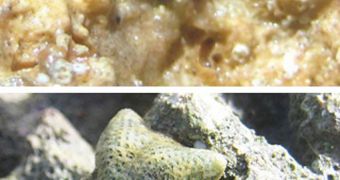According to researchers at the University of California in Davis (UCD), a new species can emerge in around 6,000 years. This is a significantly shorter period than first thought, but it's important to note here that not all species can differentiate so fast.
The new study was carried out on Australian sea stars, which can apparently evolve at a very fast pace. Compared to other organisms (except perhaps unicellular or very simple ones), this species can change its basic traits extremely fast.
In a paper published in the July 18 issue of the esteemed scientific journal Proceedings of the Royal Society B, UCD experts took a closer look at how life evolved in Earth's oceans. Professor of evolution and ecology Rick Grosberg was a coauthor on this paper.
He and his team were particularly interested in how subgroups of a particular species become separated in the open ocean. On land, members of the same species can become separated by a river or mountain, and then evolve on different paths, since no contact is possible between them.
When they meet again, they are so different that they cannot interbreed. This is when a new species is born. However, exactly how this separation process occurs in the open ocean is not yet clear. In order to gain more insight on this issue, experts analyzed the sea stars Cryptasperina pentagona and C. hystera.
Both these animals look exactly the same, but Hystera can only be found on a few beaches and islands, while Pentagona can be located in a much broader range. The latter feature both males and females, whereas Hystera are hermaphrodites, Astrobiology Magazine reports.
“It's as dramatic a difference in life history as in any group of organisms,” Grosberg explains. UCD researchers conducted DNA analysis on both species, and determined that the two species separated from their last common ancestor between 6,000 and 22,000 years ago.
Interestingly, such a short time frame would appear to indicate that their divergence occurred very fast, not over millions of years. According to scientists, quick changes in water currents off the coasts of Australia may have been responsible for this swift isolation.
Scientists say they plan to take this study even further, using funds provided by the US National Science Foundation (NSF).

 14 DAY TRIAL //
14 DAY TRIAL //